

Do you have olive skin? Do you know what the properties of olive skin tone are? Which colour best suits you? Choose the ideal dress tint, cut, and trim to represent your uniqueness and beauty. Identify your skin type and dress appropriately to highlight its particular brilliance and allure for the greatest overall appearance. Next, we will start it!

Skin undertones refer to the underlying hues that can be seen beneath the surface of your skin. Olive skin is characterized by light green or yellow undertones with neutral and warm undertones. This unique undertone can be mixed and matched with a variety of colours to flatter olive skin shine.
Yellow-green is all about undertones, which only show through your skin's top layers. For complexion, people with olive skin often have a range from natural taupe to brown, fall into Fitzpatrick types III to IV and V, and tan easily from sun exposure. Light olive skin also tans more easily than lighter skin.
Olive skin tone varies in depth, is it warm or cool olive skin? From light to dark, depending on which undertones you have in your skin. Cool olive skin undertones look more greenish, it is a look like champagne or pale gold complexion. Whereas more yellowish warm olive skin can look more gold or bronze coloured.
Additionally, olive skin is known for its natural radiance and resistance to visible signs of ageing.

Image Source:100percentpure
Cool skin tone has blue veins colour.
Warm skin tone is peachy, yellow or golden. The vein colour is green or olive.
Olive skin tones range from taupe to brown. The vein colour is a mix of yellow with green.
Neutral skin tone veins may appear colourless skin tone.
Compare yourself to the blank sheets of paper. If your skin looks reddish or pink next to the paper, you may have a cool skin tone. If your skin looks yellow or peach next to the paper, you probably have warm skin. If your skin looks grey or green next to the paper, you may have olive skin.
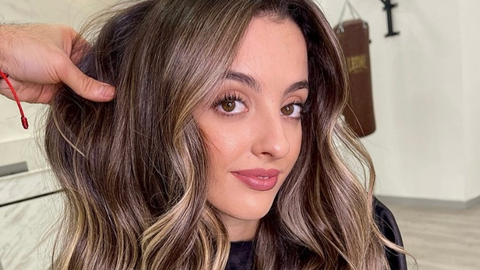
You may have olive skin tones if you answered yes to some of the following statements:
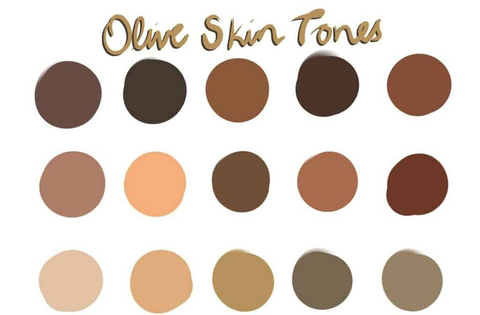
Image Source:artsydee
Cool Olive: Light skin tones. their skin may be little grey in a bad light, with a complexion tone of little lights yellow normal in normal light. This is cold olive skin.
Warm Olive: Darker skin tones. Warm olives skin is generally appropriate for pink but not for purple. This distinction is quite faint.
So, that being the case, how do you match the colour to olive skin? Read on!

Image Source:provenwinners
The colour wheel and the contrast rules are usually used in colour theory and visual perception, we could use these to determine optimal colour ranges for olive skin and apply them to dress colours.
It is necessary to wear garments that have at least a slight brightness contrast with your skin tone; it does not have to be the same colour; the same colour is not too different in tone from your skin, but it will not make your skin shine.
Next, we will organize the dress colour matching scheme according to the olive skin tone or undertones:

For the colour of your dress to match your olive skin perfectly, the easiest option is solid colours. It is also a good choice to choose different monochrome matching shades by skin undertones. This means that the clothing colour you choose is a variation of olive skin undertones yellow-green colour. These include olive, army green colour, sunburst, lime or any other variation of yellow.
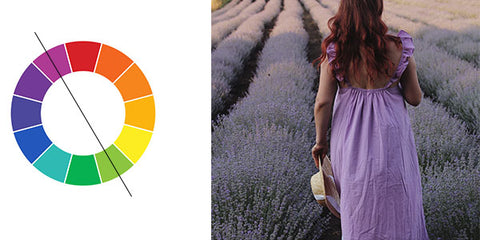
Choose colours from hues on the opposite side of the colour wheel, known as complementary colours. When two complementary colours are placed together, they can create a strong visual effect and make each other stand out even more. For olive skin undertones tone, the complementary shade is mauve, purple or magenta. Violet or purple variants are a great contrast to olive and can accentuate the warmth and radiance of olive skin, creating a dynamic and interesting visual.
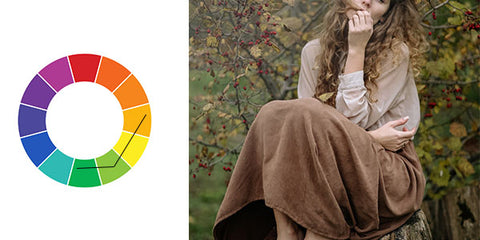
Similar colours are always suitable as dress colours. As someone with an olive skin tone has a touch of brown, you can easily choose earth-tone dress colours. That means wearing colours like champagne, taupe and chocolate brown dress. These colours will coordinate perfectly with your skin tone and look natural.
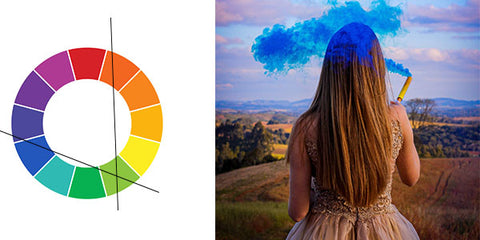
Colours that make an equal triangle with yellow-green can be used in a triadic colour scheme. The triadic shades of olive skin undertones are blue-violet colour and reddish-orange. These colour combinations can create a dynamic and energetic effect. All light, dark, bold or pastel variations of these shades should complement olive skin when worn.
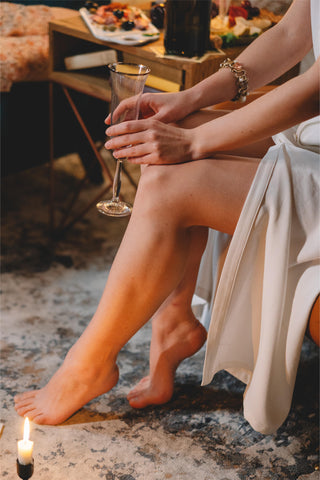
Choosing a champagne party dress can make olive skin appear glowing. The texture and radiance of champagne can be echoed with the warm glow of olive skin to create an elegant and glamorous image. To emphasise the smoothness and delicateness of the garment, consider using silk, satin, or other soft textures. Champagne necklaces, earrings, bracelets or hair accessories can add highlights and details to the overall look and complement olive skin.

Combining olive skin with a burgundy dress can create an elegant and regal look. Burgundy dresses often feature elegant cuts and ornate details. Contrasting with the skin, highlighting the radiance and natural beauty of the complexion. Especially, neutral colours can provide balance when paired with a burgundy satin dress, consider black, white or silver shoes, clutches and accessories to complement olive skin.
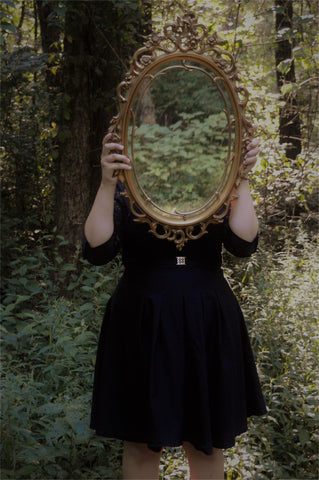
A fashionable black dress is a timeless classic, with designs that are typically basic and elegant, making them appropriate for practically every event and style. An elegant black dress, whether long or short-sleeved, with a half-length or full skirt, can showcase a woman's elegance, nobility, and dignity. Finely crafted, soft-textured black gowns with beautiful lines are also a good choice for olive skin.

Terracotta is an orange-red colour inspired by earth and brick tones, and this year's trendy terracotta dress complements olive skin. Girls with olive complexion wear this dress that highlights the colour layering of a body, making it appear high-end, elegant and beautiful. Consider a gold or copper necklace for an added touch of richness and glimmer.

The gold shade is a dazzling and textured colour that illuminates the complexion and complements olive skin tones, making girls look beautiful and dignified. Consider a warmer and soft gold prom dress to complement olive skin tones. When coupled with a golden gown, the appropriate cosmetics and haircut can improve the entire appearance.
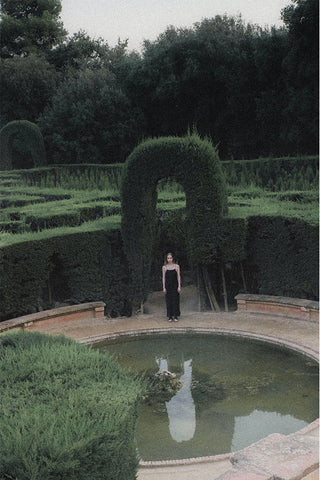
Olive green can be regarded as the romantic colour of the fashion industry colour. It may produce wonderful effects whether it is all green or mixed with other colours. Olive green is a gentle and extremely elegant temperament colour, which can add a touch of warmth and calmness to your dress. When choosing olive green dresses, choose one that has texture and a special cut to accentuate your personality and shape. Complements olive skin for a Mediterranean-inspired allure.
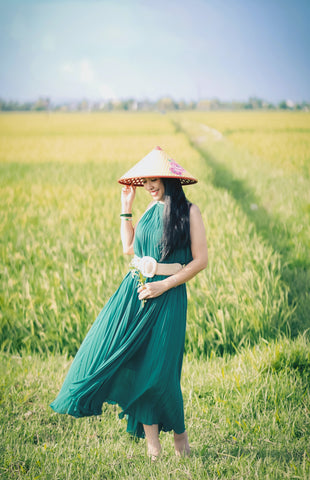
Teal is a colour that mixes blue and green, and it adds an elusive and enigmatic colour mood to the entire collocation. It is a blending into the natural colour of the earth, natural and rich, calm and self-sustaining, showing natural and independent femininity and fashionable and retro classic beauty. When matching with teal dresses, use natural and fresh makeup and haircuts that complement you.

Not trying on some nice clothes? your style will be limited. So for those women who want to show their charm, it is recommended that you dress boldly in daily life. The fuchsia pink dress is rarely worn, but it is also very good for individuals with an olive complexion, This colour is more pink and soft, and it is quite appealing. It is a little more playful than other colours, youthful and beautiful. It is a very girly colour.

Which colours are considered elegant? Dusty blue is one of them. As the name suggests, dusty blue is a blue with grey tones. The addition of grey tones reduces the saturation of the original blue, making it easier to manage and match. dusty blue dresses are also very friendly to olive skin, it can make the complexion more fair and translucent.

Speaking of pink, it should be a colour that girls of all ages, especially love. Dusty pink is a soft and elegant colour that is a mix of grey and pink. This colour is particularly well-suited for use in the fashion industry. What it represents is a simple and gentlemanly feeling, a feeling of romance and harmony. This colour has a retro aesthetic feeling of dry roses. Your dusty rose dresses just got a little more classy.

Lavender generally refers to light purple, and it is also one of the most popular colours for wearing. It has a sweet feel without becoming too girly, and it's also known as a great pink. If you are going to a prom or a wedding, a lavender colour dress is perfect. When mixed with neutral-coloured accessories, lavender adds life to their subdued and subdued vibes.

The copper colour has a rational, inclusive and wise persuasion. Therefore, it often appears on important occasions. Warm olive skin, often with golden or orange tones, complements the coppery gown. The simple style makes the whole person look more charming, and at the same time makes the copper dresses show a variety of charms.
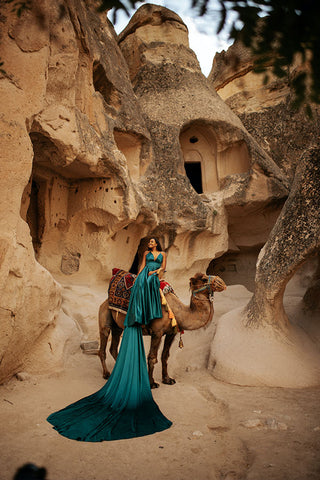
Choose a suitable Dark Green dress style according to your personal preference and body shape. Consider different neck shapes, cuts and lengths to accentuate the features you most want to project. dark green is a cool and mysterious shade of green, whether you wear it for parties, social gatherings, or special occasions, using a dark green satin dress for olive skin will give you a lively and charming appearance.
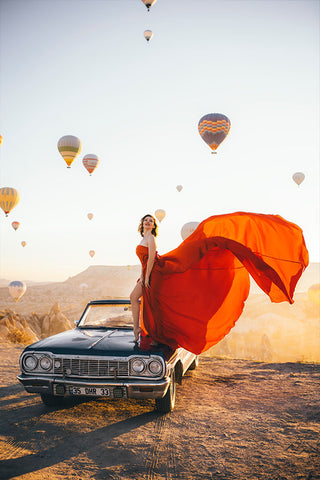
Burnt Orange is a deep, saturated shade of orange that complements olive skin for a vibrant look. The burnt orange satin dress not only has a particularly cute aura but also has a slightly retro temperament. You can choose fluid dress fabrics, details or tailoring designs to add charm to the overall look.
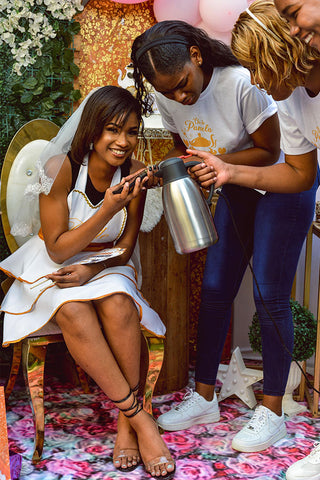
Ivory is a pale milky, non-bright colour that complements olive skin, exuding elegance and gentleness. Wearing ivory dresses can not only make you look more refined but also make your skin more delicate and soft.
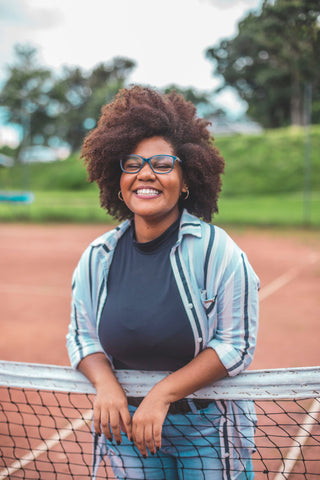
For people with olive skin, some colours on the colour wheel may contrast strongly with their skin tone, known as the danger zone of the colour wheel. These colour choices may make skin tones appear unnatural or produce an undesired appearance.
As someone with olive skin, you should avoid wearing colours like orange and turquoise shades. These colours can clash with your olive skin, making you look pale and sick, especially if they have similar brightness to your skin.
Clothes that are the same colour and brightness as your skin can also look odd, visually love just the right amount of contrast. But don't overdo it.
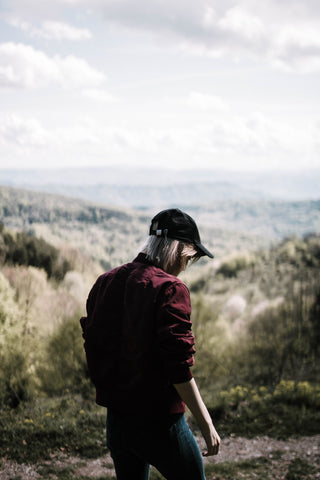
Lighter colours can accentuate the radiance of olive skin, while darker colours can add depth and richness. Most importantly, bring out the unique charm of olive skin by choosing the right clothing and accessories according to your personal style and preferences.
In fact, you can wear whatever you want, and you are the most beautiful with confidence.

Yes, pink can complement and enhance the natural warmth of olive complexions.
Differences in human skin colour are caused by changes in pigmentation that are the result of genetics, sun exposure, natural and sexual selection, or a combination of these.
Traditionally, the cost of bridesmaid dresses is primarily borne by the bride. However, the current rules are not fixed. Who pays depends on the budget and the relationship between the bride and bridesmaids.
For the bride, communicate her expectations and budget constraints early on. For bridesmaids, have an open discussion to make sure everyone is happy with the arrangement.